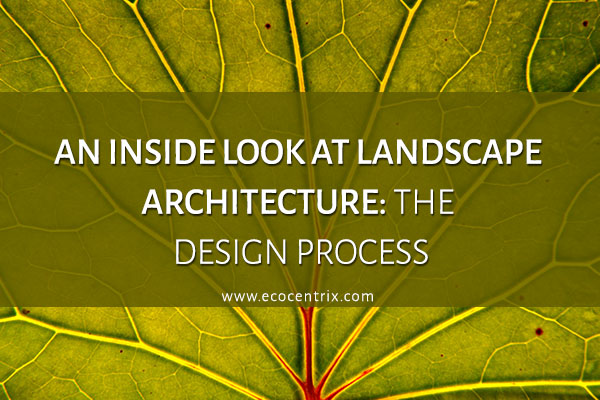Interview by Linsi Brownson, Spark Collaborative
In previous interviews with John Feldman of Ecocentrix Landscape Architecture, we have talked about perceptions inside and outside of the industry, and the importance and struggle of communicating within a large team. In a continuation of our chat, I prodded John to find out what his process looks like and how it relates to the other professionals on the job.
L: You mentioned before that you have a holistic approach when it comes to designing a landscape. Can you explain that approach a bit?
J: I use the term “holistic” to describe two aspects of our work. One aspect is the project outcome – the goal we have to create a cohesive project overall. So, while our expertise is exterior environments, we are concerned with how our work affects the interior spaces, the community, and the lifestyle of our clients. So, a holistic design approach means thinking bigger than just “doing our job.”
The other aspect of our work is the process within our specific scope. Many people don’t realize how involved a landscape architect should be throughout the project.
L: We talked a little bit before about being brought into projects later than you should, is that what you mean by involved?
J: Pretty much. Ideally, the scope of a landscape architect starts on Day 1 of the project and extends beyond the finished project. This is because our expertise lies in a few areas that are important at varying points during a project, either in addition to or independent of an architect’s involvement. There are areas of a project where we are the lead, and other areas where we are the team.
At the very beginning of a project we conduct feasibility studies, which means analyzing the site, environment, the client’s lifestyle and needs, and determining the possibilities. In a perfect world, we would do these things before the architect begins their designs, and we would collaborate with them on a common vision for the design concept, so that the project looks like it has been designed by one hand. I think of this as “responsive” rather than reactionary design.
The next step for us is design development which, again, will ideally be collaborative with the architect or interior designer (especially since we are in California, where there are usually indoor/outdoor spaces). This is when materials and finishes are explored and presented to our client.
During the construction document phase, we distill all of the above and assemble cohesive technical drawings, coordinate the further efforts of our project’s engineers and then submit to the city as well as the contractors. We also help with submittals, assist with negotiations and work to keep the permit process moving along.
Once we are ready to begin construction, our team will be on site often to observe, solve problems and make sure that the project stays true to the design.
One thing that is unique about landscape architecture is that our design keeps growing, so our work isn’t necessarily done when a project wraps. Post construction visits help see that our clients investments stay flourishing for years after.
L: That’s funny, I’ll bet a lot of people don’t think about that! So, let’s wrap this with a question that I’m dying to know. What are you passionate about, and how does that relate to your work?
J: My favorite part of my business is meeting and working with people. Our clients live in a world that is a fantasy for many people, and they are always so interesting and fun to get to know. And we work with the cream of the crop in terms of talent. In 20 years that I have been doing this, I’ve built a great many friendships with clients and colleagues.
As far as the work itself, I love problem solving. We approach every project individually, and enjoy researching the specifics of the property, it’s history, and getting to know the lifestyle and culture of the clients. It’s always a unique challenge, and I love solving puzzles!

